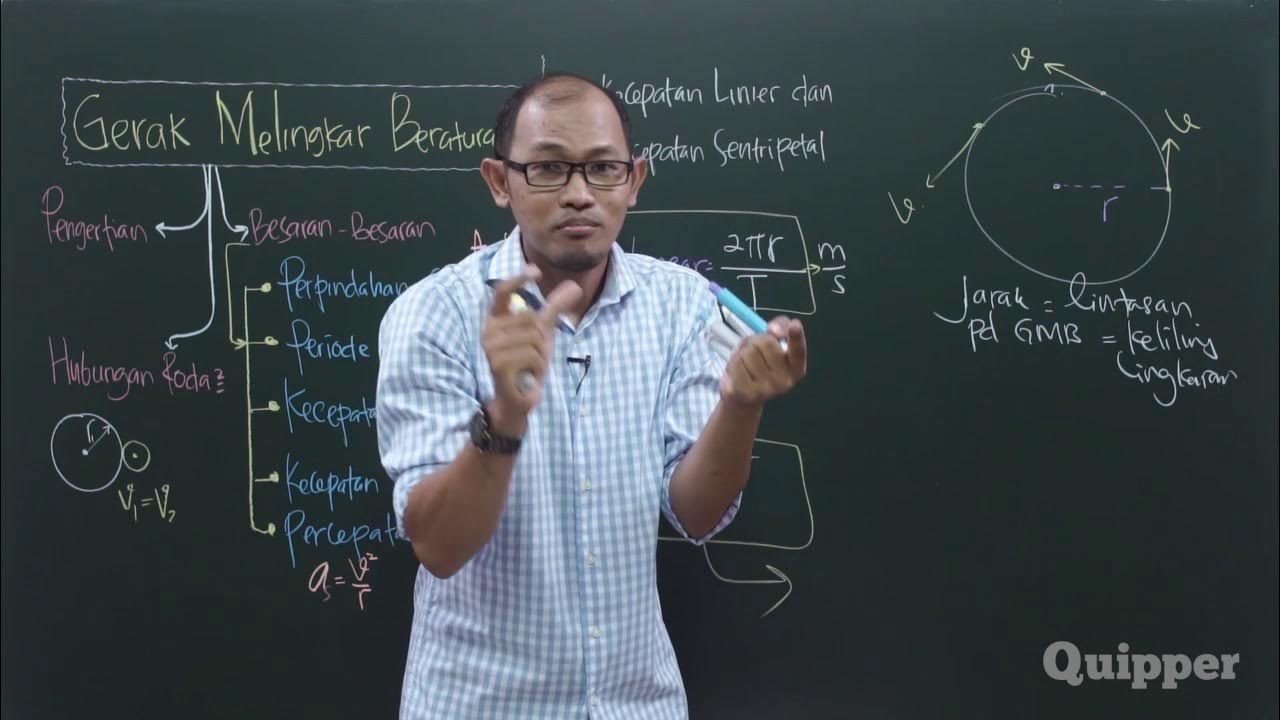Il moto rettilineo uniforme - Spiegazione e esempi
Summary
TLDRThe script explores the concept of linear motion, focusing on uniform linear motion where an object's speed remains constant. It uses the example of an airplane's white contrails and a train moving at a constant speed to explain the basic principles of motion, including the formula for calculating distance covered over time (s = vt). The video also discusses how to represent this motion graphically, emphasizing the straight line in a space-time graph that indicates uniform motion. It concludes by encouraging viewers to engage with the content and follow the channel for more educational insights.
Takeaways
- ✈️ The white trails left by an airplane in flight can be considered the plane's trajectory, representing the successive positions the plane occupies.
- ⛷️ Not all trajectories are straight; for instance, a skier's trail in the snow is curved.
- ➡️ Understanding the trajectory of a moving object is crucial for studying its motion and predicting its future position and speed.
- 🚀 The simplest trajectory to study is a straight line, known as rectilinear motion.
- ⚖️ To simplify motion analysis, we can treat an object as a material point, meaning an object extremely small compared to the distance it travels.
- 📏 By assuming constant velocity during motion, we can analyze rectilinear uniform motion, where the object moves in a straight line at a constant speed.
- 🚄 An example of rectilinear uniform motion is a train moving at a constant speed of 300 km/h or about 83 m/s.
- 🕰️ By knowing the constant speed and the time, we can calculate the distance traveled using the formula s = vt (space = velocity x time).
- 📊 The space-time graph of rectilinear uniform motion is a straight line, indicating a constant velocity.
- 🔢 The law of uniform rectilinear motion helps determine the position of a body at any given time, crucial for predicting future positions and speeds.
Q & A
What are the white trails often seen in the sky left by an airplane?
-The white trails, also known as contrails, can be considered as the trajectory of the airplane, which is the line connecting the successive positions the airplane occupies while in flight.
Why is it important to understand the type of trajectory followed by a moving body?
-Understanding the type of trajectory is fundamental for studying the motion of a body, as it helps to determine where the body will be after a certain time and how fast it will move.
What is the simplest type of trajectory for a moving body?
-The simplest type of trajectory is the straight-line trajectory, which is the path followed by a body in linear motion.
What does it mean to assume a body as a 'point material' in the context of motion studies?
-Assuming a body as a 'point material' means considering the object to be extremely small compared to the distance it travels, simplifying the analysis by treating it as a point rather than a complex body.
Why can a person running be approximated as a point material when observed from a drone?
-When observed from a drone, the person appears more and more like a point as the drone ascends because the distances relative to the person's body become significantly large compared to the size of the person.
What is the definition of uniform linear motion?
-Uniform linear motion is the motion of a body along a straight line with a constant speed.
Why is the speed of a train considered constant for the purpose of this script's example?
-The speed of the train is considered constant to simplify the analysis and to demonstrate the principles of uniform linear motion, where the distance traveled is directly proportional to the time elapsed.
How can the distance between two train stations be calculated if the train's speed is constant?
-The distance between two stations can be calculated by multiplying the constant speed of the train by the total time taken to travel from one station to the other.
What is the significance of the formula s = vt in the context of uniform linear motion?
-The formula s = vt, where s is the distance, v is the constant speed, and t is the time, represents the fundamental law of motion for uniform linear motion, allowing us to determine the distance traveled after a given time.
How does the position of a body change over time in uniform linear motion?
-In uniform linear motion, the position of a body changes linearly over time, meaning that for every unit of time that passes, the body moves a distance directly proportional to its constant speed.
What is the graphical representation of uniform linear motion on a space-time graph?
-On a space-time graph, uniform linear motion is represented by a straight line that passes through the origin if the body starts from rest, or through a point on the vertical axis if there is an initial displacement.
Outlines

Cette section est réservée aux utilisateurs payants. Améliorez votre compte pour accéder à cette section.
Améliorer maintenantMindmap

Cette section est réservée aux utilisateurs payants. Améliorez votre compte pour accéder à cette section.
Améliorer maintenantKeywords

Cette section est réservée aux utilisateurs payants. Améliorez votre compte pour accéder à cette section.
Améliorer maintenantHighlights

Cette section est réservée aux utilisateurs payants. Améliorez votre compte pour accéder à cette section.
Améliorer maintenantTranscripts

Cette section est réservée aux utilisateurs payants. Améliorez votre compte pour accéder à cette section.
Améliorer maintenantVoir Plus de Vidéos Connexes

Movimento Circular Uniforme (MCU) - Cinemática Escalar - Aula 16 - Prof. Marcelo Boaro

Pemodelan Matematis Langkah 1 Tujuan Percobaan

Plotting Your Distance-Time Graph

Gerak Benda dan Makhluk Hidup di Lingkungan Sekitar

Quipper Video - Fisika - Gerak Melingkar Beraturan - Kelas 10

Fisika - Penjelasan Perbedaan GLB dan GLBB
5.0 / 5 (0 votes)
